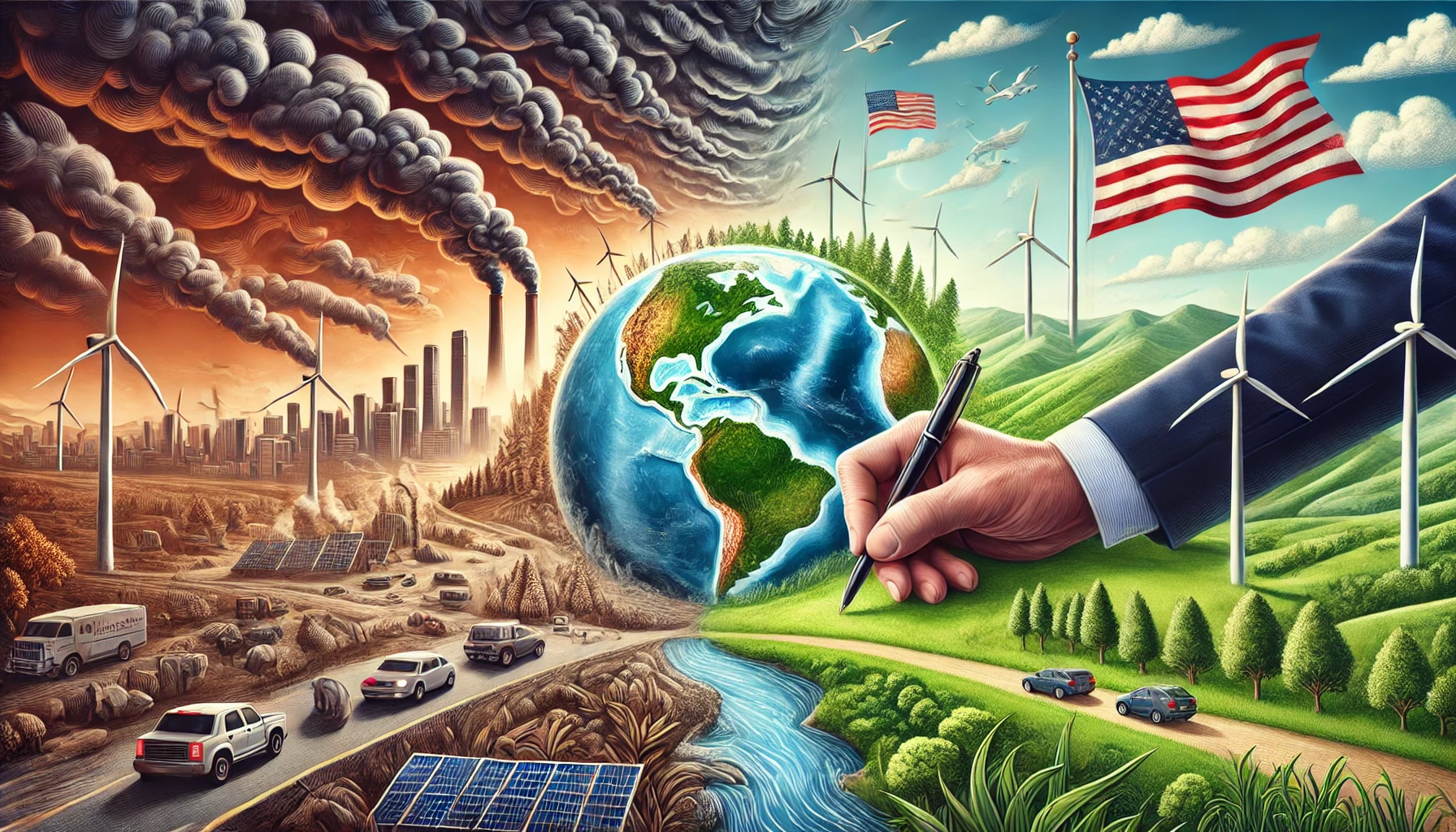Climate change is real and widely recognized as one of the most critical global issues today. It refers to long-term shifts and changes in temperature, weather patterns, and climate systems, largely driven by human activities, such as burning fossil fuels (coal, oil, and gas), deforestation, and industrial processes that release large amounts of greenhouse gases (GHGs) into the atmosphere. These changes are leading to more extreme weather events, rising sea levels, melting ice caps, and disruptions in ecosystems.
The role of the U.S. President is crucial in addressing climate change for several reasons:
1. Policy Leadership
The U.S. President has the power to shape national climate policy through executive orders, regulatory action, and by influencing legislation. For example, former President Obama was instrumental in signing the Paris Agreement, a global climate pact, while President Biden rejoined the agreement after the U.S. briefly withdrew under President Trump. U.S. policies on energy, emissions reductions, and conservation set a tone for global efforts.
2. International Cooperation
Climate change is a global issue requiring international collaboration. The U.S. is one of the largest greenhouse gas emitters, so its participation and leadership in global agreements (such as the Paris Agreement) are vital for the success of international efforts. The President plays a key role in international diplomacy, working with other nations to meet climate targets.
3. Economic Influence
The U.S. is a major global economy, and the President’s stance on climate change can influence economic sectors like renewable energy, fossil fuel extraction, transportation, and manufacturing. Incentivizing the development of clean technologies (like wind and solar power) and reducing reliance on fossil fuels are key aspects of climate policy.
4. Regulation and Legislation
The President can direct agencies like the Environmental Protection Agency (EPA) to regulate emissions, implement climate action plans, and enforce laws that limit pollution. The President also works with Congress to pass legislation that can have long-term impacts on climate policies, such as investing in green infrastructure or setting carbon pricing mechanisms.
5. Public Awareness and Action
A President’s leadership can shape public perception and mobilize collective action on climate issues. By prioritizing climate change and integrating it into national dialogue, the President can encourage businesses, states, and individuals to take action on sustainability, energy efficiency, and environmental responsibility.
In short, the U.S. President plays a significant role in combating climate change, both by leading domestic initiatives and participating in global efforts.

Vinod Ram has been in Software Industry since 2006 and has experience of over 16 years in Software Development & Project Management domain specialised majorly in LAMP stack & Open Source Technology, building enterprise level Web based Application, Large Database driven and huge traffic Websites and Project Management.
He loves to write information articles and blog to share his knowledge and experience with the outside world and help people to find solution for their problems.
